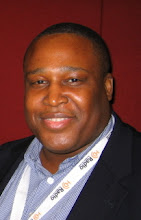
In the wake of the Imus, Elvis & JV firings and the Opie & Anthony suspension, now might be a good time to take some advice from Mancow. Not the Bay Bridge blocking Mancow of old, but the new, rested, relaxed, reflective and self-regulated Mancow who’s now advocating that radio personalities practice responsible radio. To aid jocks in being responsible on-air, Mancow has created Ten Commandments for Radio Personalities. They are:
1. Thou shalt never endanger listeners.
2. Racism is always a dumb idea.
3. Complacency on the inside loses listeners from the outside. Work at your art.
4. Contests must always be straight forward. (Being too cute with contests can be costly.)
5. Advertisers pay you. They are your friends.
6. Have a delay button (preferably 20 seconds or more) and when in doubt use it.
7. Don’t dis someone’s religion.
8. Don’t let anyone curse in your studio ever. Get them out of that habit. If they are comfortable with cursing, it can someday accidentally get on the radio.
9. Instruct guests on your radio standards so they don’t get you in trouble.
10. Do good. (We’re not on earth to mark time. We’re here to make a difference).














